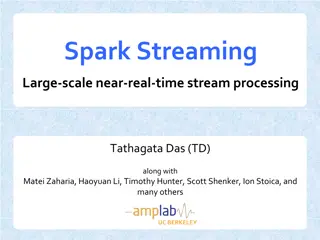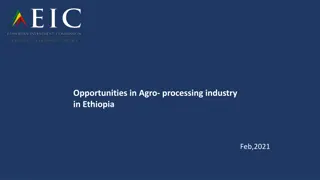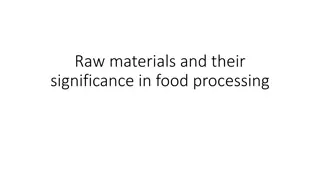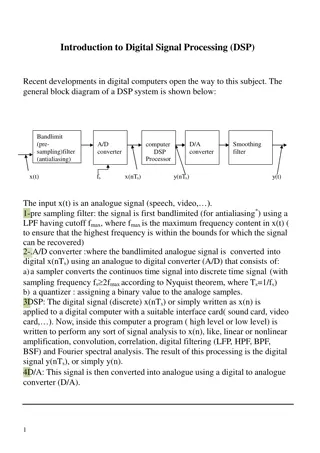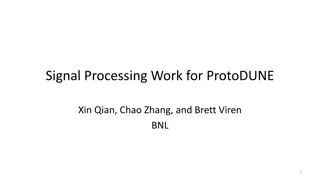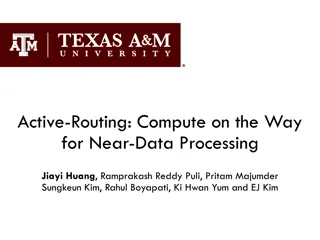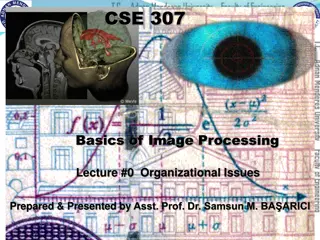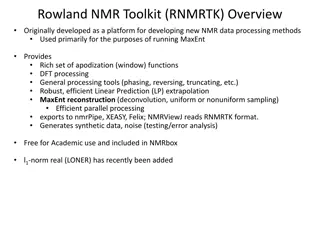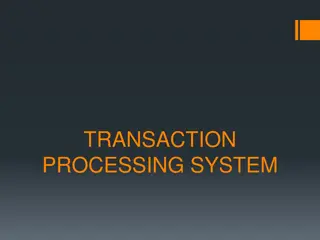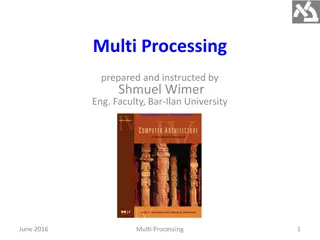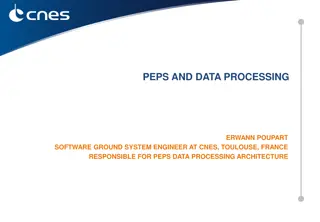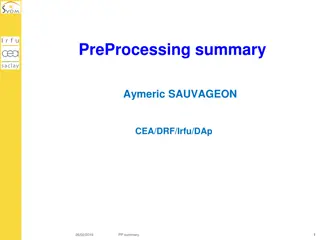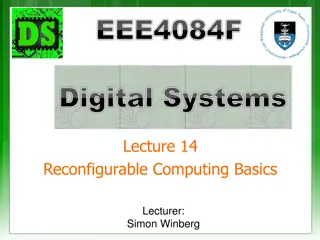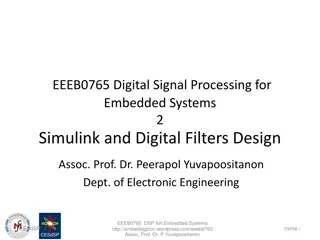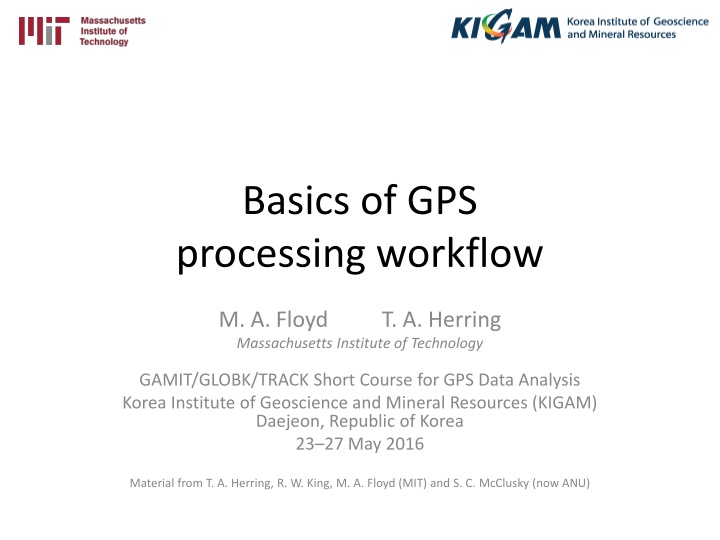
GPS Processing Workflow: Basics and Structure
Learn about the basic stages of GPS data processing workflow for geoscience applications, including data collection, processing steps, and software tools such as GAMIT and GLOBK. Understand the structure of scripts used for GPS data analysis and how to prepare inputs and interpret outputs effectively.
Download Presentation

Please find below an Image/Link to download the presentation.
The content on the website is provided AS IS for your information and personal use only. It may not be sold, licensed, or shared on other websites without obtaining consent from the author. If you encounter any issues during the download, it is possible that the publisher has removed the file from their server.
You are allowed to download the files provided on this website for personal or commercial use, subject to the condition that they are used lawfully. All files are the property of their respective owners.
The content on the website is provided AS IS for your information and personal use only. It may not be sold, licensed, or shared on other websites without obtaining consent from the author.
E N D
Presentation Transcript
Basics of GPS processing workflow M. A. Floyd T. A. Herring Massachusetts Institute of Technology GAMIT/GLOBK/TRACK Short Course for GPS Data Analysis Korea Institute of Geoscience and Mineral Resources (KIGAM) Daejeon, Republic of Korea 23 27 May 2016 Material from T. A. Herring, R. W. King, M. A. Floyd (MIT) and S. C. McClusky (now ANU)
Basic stages of GPS for geoscience runpkr00 teqc etc. MODEL (model observations) AUTCLN (cleans data) SOLVE (solve for parameters) Time series and velocity generation (GLOBK) ASCII H-files Data collection and archiving (field) Raw (RINEX) data processing (GAMIT) RINEX files glred (time series) globk (velocities) 2016/05/23 Basics of GPS processing workflow 2
Structure The scripts that control gamit and globk all have built in help which can be evoked by typing name ~/gg/com contains all of the scripts used ~/gg/gamit/bin and ~/gg/kf/bin contain the program executables kf programs also have help output (gg is a link in your home directory that points to the directory with the gamit/globk software installed) Once the software is installed; user selects data to be processed over some interval of time and uses sh_gamit for the processing GLOBK is used after the daily processing to combine results and set the reference frame. Everyone should have completed the installation of the software at this point Running the example case is a good idea to make sure the installation is OK 2016/05/23 Basics of GPS processing workflow 3
Basic inputs and outputs RINEX data must be prepared for input to GAMIT Output for GAMIT and input to GLOBK are ASCII h-files Loosely constrained solutions with a priori parameter information, parameters adjustments and full covariance matrices Final output of GLOBK is .org -file Time series ( .pos -files) Velocities ( .vel -files) 2016/05/23 Basics of GPS processing workflow 4
GAMIT 1. Run sh_setup Check all links, especially to grid files (otl.grid, atl.grid, map.grid, met.grid; see sestbl. for what is switched on ) 2. Place RINEX data to be processed in rinex/ Except any publicly-available RINEX files one has set to be FTP d in sites.defaults 3. Prepare and verify station.info, e.g. sh_upd_stnfo 4. Prepare and verify apr-file, e.g. sh_rx2apr 5. Run sh_gamit 2016/05/23 Basics of GPS processing workflow 5
sh_gamit sh_gamit is the master script for running GAMIT The following files are important to verify and/or edit (e.g. after sh_setup) autcln.cmd (probably unnecessary to edit) process.defaults (not necessary to edit much, if anything) sestbl. (controls experiment observations and models; defaults OK but may want to edit) sites.defaults (list of sites to process in experiment) sittbl. (controls a priori constraints on sites; probably unnecessary to edit) station.info (very important file to get right) .apr-file (very important file to get right) More detail in next lecture (first lecture tomorrow) 2016/05/23 Basics of GPS processing workflow 6
Processing: GAMIT Preprocessing Download (sh_get_orbits) and prepare (sh_sp3fit) orbits Make clock files (MAKEJ) Download (sh_get_rinex) publicly available sites and convert RINEX files to GAMIT internal format (MAKEX) Write batch ( b ) files Iterative solution (run b-files) Calculate synthetic observations from a priori parameters and models (MODEL) Create observables (LC, L1+L2, etc.), clean data (AUTCLN) Fit calculated to observed by solving for parameter estimates (SOLVE) Update a priori information if large adjustments 2016/05/23 Basics of GPS processing workflow 7
Post-processing: GLOBK Convert ASCII h-files to binary h-files (htoglb in glbf/) Generate and chronological list of binary h- files (glist in gsoln/) At this point, diverge in approach depending on solution sought 2016/05/23 Basics of GPS processing workflow 8
GLOBK short-term combinations Combine days from a period over which velocities are negligible, e.g. a 10-day survey, bi-weekly or monthly combinations for continuous GPS Reduces short-term scatter Reduces number of files to be carried forward to velocity solution Run glred to generate time series Plot time series (sh_plot_pos) Inspect time series to identify (and remove) outliers Run globk to form one solution file for survey ( .org -file) without estimating velocities apr_site all 10 10 10 0 0 0 or apr_neu all 10 10 10 0 0 0 2016/05/23 Basics of GPS processing workflow 9
GLOBK long-term velocities Combine daily (continuous) or short-term combined h- files (e.g. surveys; see last slide) Run glred to generate time series Plot time series (sh_plot_pos) Inspect time series to identify (and remove) outliers Run globk to form final solution file for all data ( .org - file) with estimating velocities apr_site all 10 10 10 1 1 1 or apr_neu all 10 10 10 1 1 1 2016/05/23 Basics of GPS processing workflow 10



